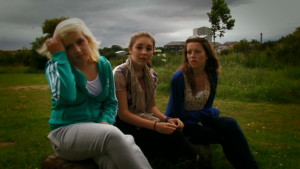I’ve been working with charities since I first started doing bits an pieces for the video unit at Oxfam back in 1999. I love being part of getting their message across – it makes me feel like I’m making a difference in a small way. My filmmaking has improved significantly since then – I’ve definitely put in the 10,000 hours they talk about. But what I’ve realised over the years is that decent filmmaking is only a fraction of the skill of working with charity clients. A HUGE part of it is client liaision. People who aren’t filmmakers don’t know what they don’t know – so it is my job to make sure that all the potential pitfalls, delays, money-pits and disappointments are thrashed out thoroughly beforehand. For those who would LIKE a nice little film for their website but haven’t yet taken the first step – here are some top tips:

1 – Know what you want to say.
Who is the audience for the film? Can you put it into a sentence? Condensing the messaging of an organisation into a film has an amazing way of throwing into the light differences of opinion and basic discrepencies about what you are doing. When I first started making films I was astonished to find myself in the middle of high-level power struggles which really should have been ironed out before we got to the cutting room. This can make it hard to make a good film.
2 – Don’t make an expensive powerpoint presentation
“Show don’t tell” is the telly phrase. Films are an amazinway to get across lived experience, emotion, end-user testimonials. Us filmmakers are expert at telling stories… but stories need to breathe to live. Don’t weigh them down with information that is better placed off-screen. Your creative director / campaign leader can introduce the film at your next conference – do they need to be on screen? Let the people who benefit from your work do the talking.
3 – Know your budget.
Films need not cost a fortune. The cost of things can depend on things like how many shoots / locations, how complex the graphics are, scripted or observational filming. If you’re trying to do it as cheap as possible it can be helpful to give the filmmaker an idea of the budget so they can calculate what is the best possible thing you can achieve within what you are spending.
4 – Don’t hire one person to do film and photography.
Consider: If you want a key moment covered do you want your operator to be taking a photo or filming? Many filmmakers do photography and many photographers can shoot decent film. Trying to do both at once only works well in very rare situations. I will usually offer to export stills from my footage or recommend a talented photographer friend.
5 – Have a clearly worked-out brief.
When I started out I usually managed to pretty much hit the mark of what the client wanted and all was fine. Every so often the client had a completely different idea. Or even worse – two people within the client organisation had different ideas from each other. So it really really helps to write down and agree on what key points should be covered, what shoots are expected to take place, whether you want motion graphics or expect Matrix-style stunts, do you want it funny or factual. It’s best to involve the filmmaker in this process. Then you have a good basis to discuss costs, and where they can be brought down if necessary. ALSO – if the film is not what you expected, and these points were clearly noted in the brief, you have an argument for asking them to put it right at their own expense.
6 – Think about music
Films need decent music. Even ones that go on facebook with text. Be prepared to pay around £100 for a track.

7 – Do you really need a web link?
This is a personal bugbear of mine. People can’t click through on a video and they’re hardly going to get out a notebook and write it down. Also web-links are apt to change and you don’t want to pay to re-edit in a year. I always recommend you stick it in text next to the video on your site.
8 – Don’t make a camel
What do you call a racehorse designed by a committee? Exactly! A charity film works best when it is succinct and emotionally punchy. Whether a film should have this font or that font or a different music is largely a matter of opinion. By all means involve many people when forming the initial brief – but if possible try and funnel feedback through one person. Ideally a fairly decisive person who isn’t too scared of making a mistake.

9 – Have a clear sign-off process
Signing a film off badly can be an extremely time-and-therefore-money-hungry process. Discuss this clearly with your filmmaker. You should get at least 2 viewings – one for major changes, one to check that they are to your satisfaction. Make sure that all the relevent stakeholders are available during the time window allocated for you to view it. If the CEO only looks at it AFTER it’s been colour-graded and sound-mixed then changes can be expensive. No filmmaker likes to charge an extra day-rate to fix the on-screen job title of someone or other, but that’s how much it can cost if you ask for it a week after sign-off.
10 – Not getting the master files
Once you are happy with your film make sure you get a copy of the actual file. Ideally also get a ‘clean’copy – without music and text. Copy these files into two or more places. This will allow you to re-edit, get your teenage son to add text or send it to a less grumpy / expensive / busy filmmaker to do stuff in the future.
This is well worth reading, she clarifies the process and has given me a whole new way of thinking about commissioning.